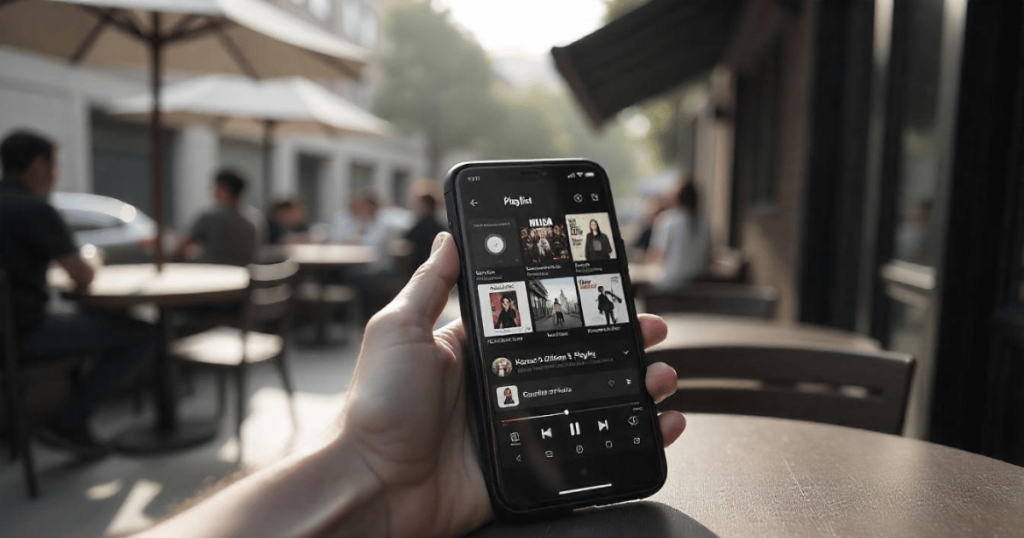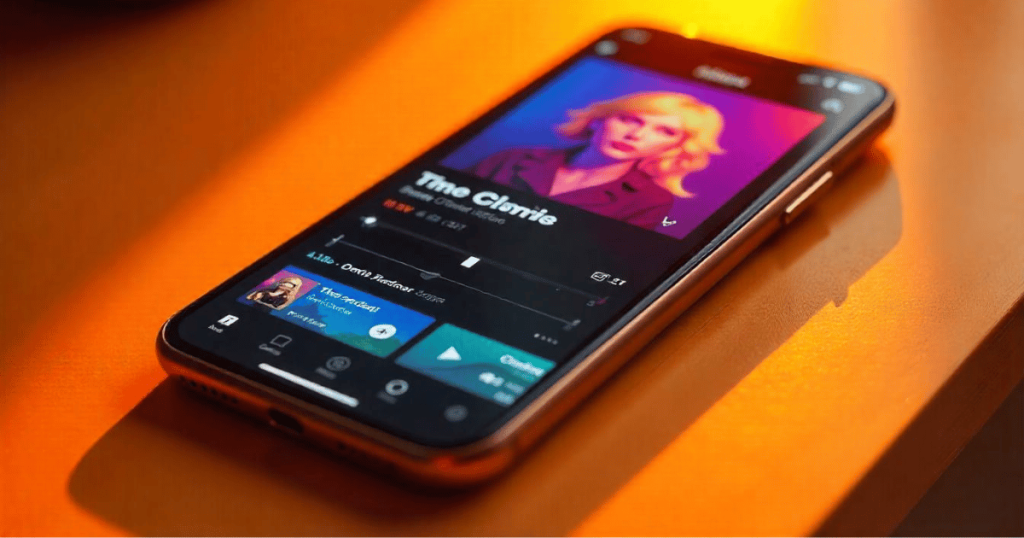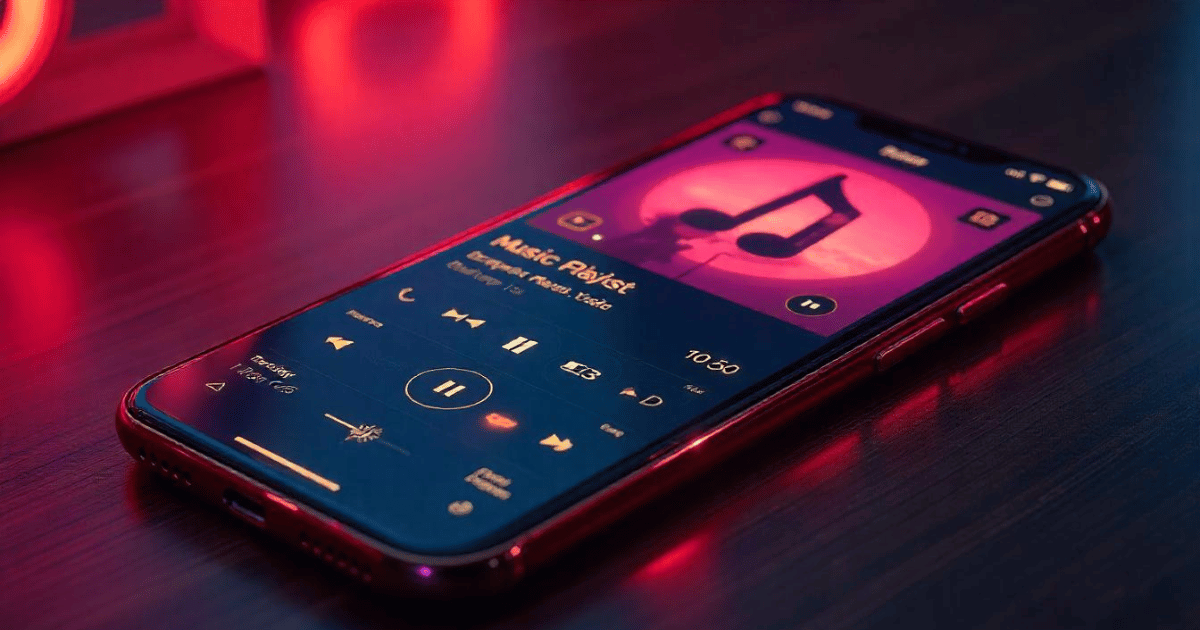There’s a buzz in the digital corridors of hip-hop, a quiet revolution fueled by streaming, a seismic shift where playlists are no longer just a side hustle for exposure—they’re the heart of the game. In 2025, when getting your track on a playlist can light a fire under your career, you need to understand the terrain like a street map of your hometown. This is not your sanitized, corporate how-to. This is an exposé, a manifesto, and a survival guide for artists ready to take on the streaming giants.
What Playlisting Means in 2025
Let’s start with a hard truth: playlists aren’t some optional extra in today’s rap ecosystem—they’re the new currency of credibility and career-making clout. Gone are the days when you simply dropped a track and hoped for radio spins. Today, playlists are the modern-day equivalent of mixtape circuits and underground radio; they’re the gritty bulletin boards where the cred is earned, where your art is either anointed by tastemakers or lost in the noise. Want to learn how other artists built their names from scratch? Start with our deep-dive on how to make viral rap tracks in 2025 using trends, strategies, and AI hacks — because sometimes, the playlist picks up the wave after you already created it.
In 2025, playlists are the primary gateway to discovery. They are the pulse of the digital realm, pulsating with the energy of billions of streams. They define how the world hears you. And it’s not just about the numbers—it’s about placement in the right playlist that resonates with the vibe of your music. Think of it as the ultimate stamp of approval. When a track lands on a top-tier playlist, it’s not merely curated; it’s an endorsement from the influential gatekeepers of modern music.
But let’s break it down: what does it mean to be “playlisted” or on a “playlist“? It means that your sound has passed some invisible threshold of cool, that your track isn’t just another file on a server—it’s a signal to the world that you belong in the conversation, in the mix of mainstream culture, in the playlists that curate the zeitgeist. It means algorithmic magic, editorial backing, and grassroots hustling coming together in a moment that can change your trajectory overnight.
There’s a raw urgency here: if you’re not in the playlists, you’re invisible. And if you’re invisible, you’re not getting streams, and if you’re not getting streams, the machine never notices you. In 2025, playlists are both your best friend and the toughest critic in a system that rewards resonance over routine.

The Anatomy of a Playlist: Editorial, Algorithmic, and User-Curated
Playlisting in 2025 isn’t one-size-fits-all—it’s a stratified world with different players and power brokers:
Editorial Playlists
These are the high-status lists that carry the weight of institutional endorsement. Think Spotify’s or Beats To Rap On or RapCaviar or Apple Music’s Rap Life, those carefully curated, editorial visions that radiate influence and authority. Landing on an editorial playlist is like snagging a backstage pass from the gatekeepers of the industry—a signal to the world that your sound is not only relevant but essential. But here’s the catch: editorial playlists are as much about narrative as they are about music. They’re the courtrooms where the craft is validated by seasoned tastemakers, and they operate in a realm that’s part art and part politics.
Editorial placements come with their own brand of mystique and inaccessibility. They’re curated by in-house teams who operate behind a veil of propriety, rarely giving out a peek into their selection process. The criteria? Unspoken, fluid, and often tied to the cultural moment. Breaking through isn’t just about having a dope track—it’s about signaling that you’re part of the current conversation, that you’re riding the wave of what’s next.
While editorial playlists act like high-gloss magazine covers for the streaming world, algorithmic ones play by colder rules. To really learn how they work, go binge our Ultimate Guide to the Spotify Music Algorithm. It’s not a theory. It’s a war plan.
Algorithmic Playlists
Welcome to the machine’s playground. These playlists are powered by the algorithms at the heart of Spotify, Beats To Rap On, YouTube Music, and the like. Discover Weekly, Release Radar, or personalized mixes that change day-to-day—here, the data reigns supreme. The algorithm is a cold, calculating beast that assesses engagement, skip rates, and listener behavior, all to predict what you should hear next. Getting in on these playlists isn’t about a personal nod from an editor; it’s about proving to the algorithm that people are vibing with your track.
While you can’t charm an algorithm with a personal appeal, you can game its metrics. Early listener engagement, fast-developing save rates, and enough buzz on social media all signal to the algorithm that your track is worth pushing further. It’s a feedback loop: the more your track is streamed and shared, the more the algorithm amplifies it, creating a self-fulfilling cycle of momentum.
User-Curated Playlists
Then there’s the wild frontier of user-curated playlists. These are run by influential DJs, bloggers, or even just die-hard fans with a knack for assembling killer sets. What makes them so magnetic is the genuine passion behind them—curators who live and breathe the culture, who have built their reputations on an unfiltered love for the art. Landing on a respected user-curated list can give you credibility among true connoisseurs. They might not have the billion-play numbers of an editorial list, but they offer a legitimacy that algorithms sometimes miss.
User playlists are eclectic and unfiltered—raw slices of the musical landscape that represent subcultures, underground movements, and niche communities. They’re the proving grounds for authenticity. And in today’s music scene, authenticity can be your saving grace, especially if you’re navigating a world rife with homogenized digital streams.
How to Pitch to Spotify & Apple Editorial Teams
Now, let’s get down to brass tacks: how do you convince these ironclad gatekeepers to give your track a nod? Think of this as your pitch-perfect mixtape, carefully curated not just for the algorithm but for human eyes and ears.
If your rap name sounds like a leftover Xbox username, pause here. Fix it first. Our Rap Nickname Generator and this guide on how to create a rap name will help you show up sounding like you mean business. And if you don’t have your sound locked in yet, this guide to producing rap beats at home might be the missing piece before you pitch anything at all.
Understanding the Beast:
Both Spotify and Apple operate with a similar philosophy: they want to amplify tracks that resonate, that catch fire among listeners. But they’re also notoriously opaque. Your best entry point is through Spotify for Artists, a tool that allows you to submit an unreleased track for consideration. You only get one shot to pitch—don’t let weak audio sabotage you. Run your final MP3s through our MP3 Enhancer to tighten up that mix before the playlist gods give it a listen. Or if you want full surgical control, use our free AI audio stem splitter to remix your track into a masterpiece. The process is steeped in secrecy—no one truly knows what criteria the editors are using—but there are strategies you can exploit.
Crafting Your Pitch:
- Know Your Stats: Before pitching, ensure your track is polished and ready for prime time. Analytics on pre-release engagement, even if it’s just your hometown fans or social media buzz, can be a lifeline in convincing editors.
- Tell a Story: This isn’t a sterile press kit—this is your chance to lay out your narrative. Why does your track matter? How does it fit into the current cultural landscape? Editors aren’t just selecting songs—they’re curating a story. Your pitch should be raw and honest.
- Personal Touch: While you can’t directly email the editors at Spotify or Apple, you need to work your existing networks. Connect with indie promoters, use platforms like LinkedIn, or attend industry events where these decision-makers might be present. The personal connection might be the spark that turns a generic pitch into an industry buzz.
- Be Bold and Controversial: Remember, this is 2025—the landscape rewards those who dare to disrupt. If your track challenges conventions or brings a fresh perspective, let it shine through in your pitch. Don’t be timid—edgy and unexpected tracks are what many curators are hungry for.
The Art of the Follow-Up:
There’s a thin line between persistent and pestering. Once you submit, keep a close eye on your analytics. If your track starts picking up traction organically, use that as leverage. A little hustle, a well-timed follow-up (without being spammy) can sometimes tip the scales in your favor.
Playlist Trading Networks and Submission Tools
In the labyrinth of digital promotion, not all paths to playlist glory are paved by the giants. There exists a thriving ecosystem of third-party networks and submission tools that, for better or worse, play a significant role in today’s game. And if you’re ready to hustle, these platforms can be a launchpad—or a minefield.
Playlisting without a plan is a shot in the dark. So tighten up your pitch and your profile with help from our branding & marketing blueprint for independent rappers, then level up your monetization with the ultimate guide to selling your beats online. Because once your track hits… you better be ready.
The Big Names: Submithub, Groover, and the Rest
- Submithub: This tool has become something of a digital bazaar, connecting artists with a wide range of playlist curators, bloggers, and influencers. With a reputation for both quality and questionable outcomes, it’s a double-edged sword. On one hand, Submithub can expose your track to dozens of curators at once, each with their own following. On the other, there’s a flood of submissions that can make it hard to stand out unless your track really packs a punch.
- Groover: Another rising star in the playlist promotion space, Groover positions itself as a more curated experience. Here, the focus is on quality over quantity. But just like in any marketplace, success hinges on your track’s ability to cut through the noise. What separates successful artists on these platforms is not just the inherent quality of the music, but the timing, the market fit, and sometimes, pure luck.
The Darker Corners: DIY Networks and “Pay to Play”
While reputable tools offer a semblance of legitimacy, there’s also an underground network where the lines between ethical promotion and outright manipulation blur. There are services—almost never mentioned in polite conversation—that guarantee placements on playlists for a fee. But tread carefully; these payola-esque practices often result in inflated numbers with little genuine fan engagement. It’s a revolving door of promises and disappointments that can hurt your credibility in the long run.
Strategies for Using Submission Tools Effectively
- Curate Your List: Do your homework. Don’t just blast your track into every possible submission portal. Identify curators whose playlists align with your style and vibe. Tailor your pitch to each one—generic submissions rarely convert.
- Diversify Your Approach: Relying solely on one submission tool is a risky bet. Instead, incorporate multiple platforms into your strategy. Each tool has its strengths and weaknesses; by spreading your efforts, you mitigate the risk of being lost in the shuffle.
- Monitor and Adapt: The digital landscape changes by the day. Use analytics tools (more on that shortly) to track which submissions yield actual streams and playlist adds. Stay nimble and be prepared to pivot your strategy if certain platforms stop delivering real results.

Niche Playlist Domination on YouTube
Let’s shift gears for a moment. YouTube isn’t just Google’s video playground—it’s become a critical stage for rap’s evolution. While Spotify and Apple might dominate the narrative, YouTube’s unique blend of visual and auditory content gives it an edge that’s ripe for exploitation, if you know how to play the game. Don’t sleep on the guide to building a rap career on YouTube—YouTube isn’t just for views anymore. It’s where underground becomes undeniable. Tap in before you get drowned out.
Visual Storytelling as a Weapon
YouTube demands more than just a good track—it demands a story, a visual identity that captivates viewers. Think about the impact of music videos that don’t just play your song, but create an experience. In 2025, niche playlist domination on YouTube is about leveraging your visuals to gain organic momentum. It’s about creating music videos that compel viewers to keep watching, sharing, and adding your track to their personal playlists.
Algorithms with a Visual Twist
The algorithm on YouTube isn’t solely about click-through rates or watch time—it’s about the entire ecosystem of engagement. Comments, likes, replays, and shares all combine to send a signal that your content is valuable. For an artist, this means every view is a call for further discovery. Optimize your video titles, descriptions, and tags with relevant keywords (don’t forget, YouTube’s search engine is a wild beast that rewards specificity) and ensure your thumbnail pops amidst a sea of content. Use annotations, end screens, and call-to-action overlays to guide your audience seamlessly from video to playlist.
Before you even pitch, the sound itself has to slap. That means your beat needs bounce, structure, and soul. If you’re still searching for the right sound, dig through our collections of rap beats, freestyle-ready instrumentals, and trap-heavy heaters. These aren’t background loops—they’re weapons for the war ahead.
Community-Curated Playlists on YouTube
YouTube’s community is fiercely loyal, and many influential channels curate their own playlists—a series of carefully selected tracks that embody a specific mood or theme. Getting your track added to these niche playlists can create a grassroots movement. They’re often more forgiving than the sterile algorithms of the major streaming services; these playlists embrace the raw, the experimental, and the downright innovative. Build relationships with curators, engage on social media platforms, and don’t be afraid to give a shoutout to a channel that aligns with your artistic vision. The reciprocal nature of this community can amplify your reach in ways that formal editorial playlists may not.
Real Examples of Artists Who Blew Up from Playlisting
Numbers and theories are all well and good until you see them play out in the real world. Let’s talk about some artists who have navigated the dense jungle of playlists and emerged victorious. Their stories aren’t just success tales—they’re battle scars and blueprints for every independent artist hustling in 2025.
Getting playlisted is just one battle in the war for ears. Need a name that hits like a left hook? Try our rap name generator. Want to test your flow in the trenches? Step into the freestyle zone or climb the ranks in our rap battle arena. The mic is open—and the world is watching.
The Underground Sensation Turned Mainstream
Remember how [Artist X] was once an unknown name, quietly dropping tracks into the digital abyss? Their breakthrough moment came when an independent curator added their track to a niche, yet influential, user-curated playlist. Overnight, streams surged, social media lit up, and suddenly, major editorial teams couldn’t ignore them. Their music wasn’t manufactured for the algorithm—it was real, it was raw, and it resonated. It was a classic case of organic hustle meeting digital serendipity.
The Algorithmic Victory
Then there’s [Artist Y]. With a meticulously crafted release plan, they bombarded the streaming services with an almost obsessive focus on listener engagement. They engineered their release around the sweet spot of early listener metrics—launching a social media blitz just before midnight, rallying fans on every platform, and ensuring that every stream, every share, and every skip was part of a data-driven strategy to satisfy the algorithm. The result? Their track hit the Discover Weekly lists like a freight train, and from there, it was a one-way ticket to viral fame. Their success wasn’t just luck—it was a masterclass in understanding the digital pulse.
The Visual Disruptor on YouTube
And let’s not forget the trailblazer on YouTube, [Artist Z]. They didn’t rely solely on audio; they crafted an immersive visual narrative that turned a simple music video into a piece of art. Their video, filled with raw, unfiltered energy and a visual style that’s as unpredictable as it is engaging, quickly earned a spot on several curated YouTube playlists. It wasn’t just the views—it was the passion behind the likes, the fervor in the comments, and the organic spread that brought them into the spotlight. Their story is a testament to the power of integrating visual storytelling into your playlist strategy.
These examples are emblematic of a larger trend: authenticity, when combined with strategic promotion, can still break through the algorithmic noise. They teach us that there’s no single formula—what works is a blend of timing, cultural resonance, and pure hustle.
Bonus: AI Tools That Help Analyze Playlist Trends
We’re in 2025, after all. If you’re not leveraging AI to decipher the digital noise, you’re already a step behind. Artificial intelligence is the secret sauce that can help you predict trends, analyze listener behavior, and fine-tune your strategy to a razor’s edge. Here’s how to harness the AI revolution in playlisting. AI isn’t coming—it’s already eating. We covered the best tech in our list of AI tools for rappers and producers, plus we explored how tools like AI MP3 enhancers and AI-powered music creation are reshaping the way rap sounds before it ever hits a playlist:
Trend Analytics Platforms
Platforms like Chartmetric and SoundCharts have evolved exponentially. They’re not just tracking numbers—they’re using AI to forecast which tracks and genres are poised to break through. By analyzing historical data, listener demographics, and real-time streaming trends, these tools can tell you exactly when and where to push your release for maximum impact.
Tools for Playlist Optimization
You want an edge? Real artists aren’t guessing anymore—they’re tracking BPM and key signatures like they’re stock trends. Try our free BPM analyzer or this song key & tempo finder before you upload your next drop.
And once it’s live, let our custom AI Spotify Playlist Intelligence Tool decode what playlists you’re actually showing up on. Stream hacking? Nah. Stream smartening.
AI-Driven Submission Optimization
Some emerging platforms now incorporate AI tools that refine your submission strategy. They analyze past submissions, engagement metrics, and curator feedback, offering data-driven recommendations for improving your pitch. Imagine knowing exactly what subject line will open an email, or which snippet of your track is most likely to resonate with a particular playlist curator. The data empowers you to cut through the randomness and optimize every aspect of your submission.
Sentiment and Engagement Analysis
Advanced AI tools can go through social media sentiment and community engagement to gauge public perception of your music and similar tracks. By monitoring what fans are raving about or criticizing, you can adapt your content, your marketing, and even your music production to better align with emerging trends. It’s about reading the room—the digital room—before making your move.
Personalized Strategy Suggestions
Some platforms now offer personalized playlisting strategies based on your artist profile. These aren’t generic, cookie-cutter advice—they’re tailored to your sonic fingerprint and fan base. They might show you that, based on listener habits, your track performs best on certain types of playlists or during specific times of the day. Imagine having a virtual consultant that crunches all the numbers so you can focus on making killer music.
What happens after the playlist? You cash in smart. You build systems. Here’s how to monetize your rap career in 2025, with everything from syncs to merch to full-on independence. And yeah, know your rights. This copyright and contracts guide will keep you from signing your soul away once the streams start hitting.

Wrapping Up the 2025 Playlisting Revolution
Playlisting in 2025 is more than just a promotional tactic—it’s the stage upon which careers are made or broken. From the high-stakes world of editorial playlists to the cold logic of algorithmic selections, and from the grassroots authenticity of user-curated lists to the sheer horsepower of AI analytics, the landscape is as dynamic as it is unforgiving.
Here’s the raw, unpolished truth: if you’re an artist in this era, you need to own every facet of the ecosystem. Understand that each type of playlist—the editorial juggernauts, the data-driven algorithmic marvels, and the community-fueled user lists—has its own rules and nuances. Mastering the art of pitching to those elusive editorial teams isn’t for the faint-hearted. It demands hustle, authenticity, and sometimes, a touch of rebellion. And while third-party submission tools and trading networks can give you a leg up, nothing replaces genuine listener engagement and the raw energy of a well-crafted track.
Remember that in this hyper-digital age, where AI tools predict trends and streaming algorithms rule the airwaves, success isn’t about following a formula—it’s about disrupting expectations. It’s about bending the rules without breaking your identity. It’s about using data as a tool, not as a crutch, and staying true to the pulse of the streets while navigating the labyrinth of digital platforms.
The stories of [Artist X], [Artist Y], and [Artist Z] aren’t just isolated cases; they’re signals of a broader shift. In 2025, getting your track on a playlist can be the difference between obscurity and anointing your track as the next anthem for millions. The keys to success lie in understanding each platform’s DNA, crafting pitches that are as compelling as they are strategic, and harnessing every available tool—from grassroots promotion to cutting-edge AI analytics.
So here’s my challenge to every artist, every hustler who’s pouring their soul into beats and rhymes: dive into this new era with the energy of rebellion and the precision of a surgeon. Study the data, feel the cultural undercurrents, and never be afraid to upend the norms. Whether you’re targeting the hallowed halls of Spotify’s editorial playlists, the algorithmic wonders of Discover Weekly, or the visually charged world of YouTube, know this: the game is evolving, and only those who adapt—and challenge the status quo—will rise to the top.
Embrace the playlisting revolution. Your sound is your weapon. Your story is your ticket. And in 2025, the playlists aren’t just lists—they’re the battlefields where legends are born.
This isn’t a promise of instant fame. It’s a roadmap, a guide through the chaos, and a rallying cry. The digital landscape is brutal, but it’s also fair in its own way—a place where innovation and authenticity carve out their own niches. Every beat, every lyric, every moment of raw energy can be amplified through the right playlist. So gear up, get in the mix, and let your music be the spark that sets off a revolution.
From the gritty underground to the glittering pinnacles of digital stardom, the future of rap is written in playlists. And whether you’re a DIY artist hustling in your bedroom or an established name looking to reinvent your sound, the strategies outlined above aren’t just tactics—they’re lifelines in an era where every stream counts and every playlist has the potential to change the game.
It’s time to take the plunge, to pitch your soul, and to harness the relentless energy of the digital age. Because in 2025, your destiny is not just a drop on a list—it’s a movement waiting to be ignited, one playlist at a time.
Let this guide be your battle plan, your manifesto for digital warfare, and your reminder that in the swirling chaos of the streaming age, authenticity, strategy, and relentless hustle are your most valuable assets.
